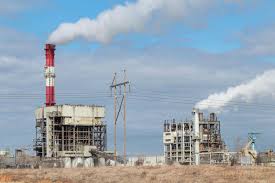
A new report issued for the Kansas legislature says the state should adopt a system for the securitization of uneconomic assets like coal plants and do so with “caution” in an effort to lower electricity rates.
An independent consultant carried out the report for legislators in Topeka who expressed concerns about soaring electricity rates in the state, due in part to rising cost of the state’s coal-fired plants. The study claimed that rates in Kansas could become competitive with plants in neighboring states if regulators introduced performance-based rate-making methods to incentivize utilities to control their costs.
Securitization of uneconomic electric utility assets has become a growing strategy to allow for the retirement of coal plants before the end of their useful lives without saddling ratepayers with the cost of these stranded assets. Several other states, such as Colorado, Montana and New Mexico, have passed legislation that makes this option available to utilities according to Utility Dive.
Kansas lawmakers are now considering the securitization option as well. While coal-fired plants used to provide Kansas with relatively cheap electricity, electric rates have dramatically increased over roughly the last decade as factors like federal environmental regulations and competition with natural gas have pressured coal-fired power plants.
In 2000, the average retail price of electricity in Kansas was 6 cents per kWh, roughly the same as average prices in nearby states like Missouri, Texas and Oklahoma, the study found. But by 2018, Kansas had the highest price of electricity in the region, at nearly 11 cents per kWh, compared to 8.09 cents per kWh in Oklahoma.
Capital spending on emissions control equipment at coal plants is a “key driver” of the rate increases in Kansas, the study said, attributing 33% of Kansas City Power & Light’s rate increases and 34% of Westar Energy’s rate increases from 2007 to 2018 to environmental controls.
Westar and KCP&L parent company Great Plains Energy recently merged into Evergy, which is now the owner of the largest coal plants in the state: the 2,187-MW Jeffrey Energy Center, the 1,398-MW La Cygne power plant and the 484-MW Lawrence Energy Center.

The study examined how the costs to ratepayers would differ between one scenario, in which the Jeffrey plant retires at the end of its useful life, and another scenario, in which the plant is retired early and a bond is issued. The analysis found that the debt repayment in the securitization scenario would cost ratepayers $82 million more than the costs in the scenario in which the plant keeps running, but noted that minor changes in assumptions about inflation could change the results to a $100 million savings for ratepayers in the securitization scenario.
In early 2019, state lawmakers introduced Senate Bill 198, a bill that would allow the book value of retiring assets to be securitized through the issuance of Kansas Energy Bill Reduction Assistance Bonds, or “K-EBRA Bonds.”
Specific provisions in the bill, the study argued, “may limit the ratepayer benefits that securitization could generate.” These include a requirement that a utility cannot give the proceeds from the bond issuance to investors and instead must reinvest it into the utility’s rate base. That requirement could make a utility hesitant to issue a bond because the company would have less control over how the money is spent, the study said. But that provision could give Kansas regulators the power to push utilities to invest the bond proceeds in communities negatively affected by the early retirement of power plants.
The study also recommended that Kansas initiate an integrated resource planning process in which utilities must regularly file long-term plans with regulators, as many states require. The legislation could be amended, the study suggested, to link the reinvestment of the bond proceeds to integrated resource plans so that the public and stakeholders can scrutinize how that money should be spent.
Evergy, however, opposed the bill when it was introduced, a spokeswoman told Utility Dive in an email. “Currently, Evergy does not need securitization as we are already retiring fossil-fueled generation and adding renewables,” she said. “However, there are some situations where securitization would be a useful tool to have. We will continue to work with stakeholders on this issue.”
Another way to get rate increases under control would be to introduce performance-based regulation (PBR) to Kansas, according to the study. Several states, such as Hawaii, Colorado, Oregon, Massachusetts and California, are currently examining PBR. The Kansas study discussed several ways to structure PBR, such as a “total expenditure framework” in which capital expenditures and operating expenditures are treated as equal when setting rates, so that the utility does not get an additional return from capital expenditures and is thus, in theory, incentivized to not overspend on capex.
But the study did not advocate any specific path forward for PBR, instead saying that the Kansas Corporation Commission should “explore the development of initial PBR mechanisms which, over time, could evolve into a more comprehensive PBR framework.”





